|
Chaniya Jaroenkunathum, Warath Sitlaothaworn, Khakhanan Ngamdencharoensri, and Bunyong Rungroungdouyboon, "The design and development of standing-assist walker (EZstand walker)" , Prachuap Khiri Khan, 15 - 17 July 2020 Abstract
The ability to stand up from a sitting position is essential for older adults to live independently and maintain an adequate level of physical activity [1]. Most elderly face the difficulty in sit to stand movement that is the reason why standing assist device is required. EZstand walker, a 4 wheels walker with standing assistmode, is designed to help solving this problem. The working concept is to use the force provided by the upper extremity to support standing process. The device is mainly designed to use with elderly people for using in daily life activity. In this study, the experiment using EMG is required to measure and compare leg muscles’ voltage different between normal sit to stand movement and sit to stand movement with EZstand walker. Muscles that covered in this study are consist of leg muscles and arm muscles. Leg muscles, which are considered and used for calculating voltage reduction, are quadriceps which compose of RECTUS FEMORIS (RF), VASTUS LATERALIS (VL), and VASTUS MEDIALIS (VM). The upper arm muscles, which are considered in sit-tostand movement with EZstand walker, are TRICEPS BRACHII muscles and BICEPS BRACHII muscles. The result turns out that leg muscles produced smaller voltage value when using EZstand walker which indicated to the reduction of force.
0 Comments
เมธาสิทธ์ิ เกียรติ์ชัยภา และ บรรยงค์ รุ่งเรืองด้วยบุญ, "การออกแบบและพัฒนาอุปกรณ์กายภาพแขนผ่านกลไกลสะท้อนแบบสมมาตร Arm Rehabilitation Mirror Therapy Linkage", Prachuap Khiri Khan, 15 - 17 July 2020 Abstrart
ปัจจุบันมีผู้เสียชีวิตเนื่องด้วยโรคหลอดเลือดสมองเป็นอันดับ 2 รองจากอุบัติเหตุ ซึ่งผู้ป่วยโรคหลอดเลือดสมองหากไม่ เสียชีวิตก็จะเป็นอัมพฤกษ์หรืออัมพาต อาการของผู้ป่วยจะไม่สามารถควบคุมร่างกายข้างใดข้างหนึ่งได้ ทำให้กลุ่มผู้ป่วยเหล่านี้ต้องอาศัยการทำกายภาพบำบัดเพื่อให้สมองและกล้ามเนื้อสามารถกลับมาทำงานได้อย่างปกติ โดยการกายภาพบำบัด จะแบ่งเป็น 2 ส่วนใหญ่ๆ คือการกายภาพรยางค์ส่วนล่างและส่วนบน ซึ่งปัญหาของการกายภาพบำบัดรยางค์ส่วนบนจะมีปัญหาเรื่องประสิทธิภาพการฟื้นฟู เนื่องด้วยเรื่องของการขาดแคลนอุปกรณ์ที่ต้องใช้ควบคู่กับการทำกายภาพบำบัด เนื่องจากอุปกรณ์เหล่านี้ ต้องนำเข้าจากต่างประเทศและมีราคาแพง ดังนั้นจึงเป็นเหตุผลให้เกิดงานวิจัยนี้ โดยงานวิจัยนี้เป็นการออกแบบและพัฒนาอุปกรณ์ทางกายภาพบำบัดแขนผ่านกลไกลแบบสะท้อน โดยอุปกรณ์จะมีแนวคิดในการนำแขนข้างที่ปกติมาช่วยแขนข้างที่อ่อนแรงผ่านกลไกลแบบสะท้อนด้วยหลักการสมมาตร ซึ่งคล้ายกับการฝึกผู้ป่วยแบบใช้กระจก (mirror therapy) โดยอุปกรณ์ต้องมีความแข็งแรงและกลไกลที่ช่วยในการขยับให้สอดรับกับการขยับแขนของผู้ใช้งานโดยไม่ขัดขวางหรือเป็นอุปสรรค ซึ่งความรู้และความเข้าใจที่ได้จากการพัฒนาอุปกรณ์นี้ ทำให้เข้าใจถึงการเลือกชิ้นส่วนและวัสดุทางวิศกรรมเครื่องกลที่เหมาะสมในการนำมาใช้สร้างอุปกรณ์การทำงานของกลไกลที่ใช้มีการสอดรับกับรยางค์ส่วนบนมนุษย์ ระบบการพยุงน้ำหนักอุปกรณ์และแขนของผู้ป่วยที่ใช้อุปกรณ์ โดยอุปกรณ์นี้จะติดระบบวัดการออกแรงผ่านที่จับของแขนทั้งสองข้าง โดยใช้สเตรนเกจสามแกนเพื่อวัดผลการทดสอบการออกแรงของผู้ใช้งาน ผลการทดสอบอุปกรณ์พบว่าการใช้งานในการกายภาพบำบัดโดยใช้แขนข้างที่ปกติมาช่วยข้างที่อ่อนแรงนั้น มีประสิทธิภาพที่ดีทั้งในด้านการขยับแขน อีกทั้งแขนข้างที่อ่อนแรงขยับได้มากขึ้นเมื่อเปรียบเทียบกับการกายภาพบำบัดด้วยแขนข้างเดียว ส่งผลให้แขนข้างที่อ่อนแรงของผู้ใช้นั้นสามารถออกแรงและควบคุมได้มากขึ้น เป็นผลให้ประสิทธิภาพการฟื้นฟูจากการกายภาพบำบัดสูงขึ้น ณัฐพล พีรวุฒิ และ จักร ชวนอาษา, "หัวหุ่นยนต์ขยับรูปปากตามเสียงภาษาไทยได้เหมือนจริง", Prachuap Khiri Khan, 15 - 17 July 2020
Sairag Sa-adprai and Bunyong Rungroungdouyboon, "The development of Exercise Machine for Training Natural Sit to Stand Movement", The 9th TSME International Conference on Mechanical Engineering, 11-14 December 2018, Phuket, Thailand Abstract
Reduced lower limb strength in elderly is related with poor ability to functional activities, increased risk of fall, recurrent falls, and mortality. Strengthening exercise for quadriceps like stand from a seat without assistance from the upper limbs is required in elderly. For the elderly, repeated sit to stands may be sufficiently challenging to improve lower limb strength and reduce functional limitations. The researchers have developed an innovative Sit to Stand Trainer (STST), a device that assists user to stand that offers variable levels of mechanical support between 20- 50 kg. The STST uses a linear actuator and tension spring including parallel mechanism to produce the support system. This research validated the STST in four healthy people, this research compared kinetics (Motion Analysis) of STST at 50 % of support level to natural, unassisted Sit to Stand movement (No STST). The resulting of trunk, hip, knee and ankle angles in STST are similar to No STST experimental condition. Based on these results, this research can be concluded that this STST facilitates natural of การประชุมวิชาการเครือข่ายพลังงานแห่งประเทศไทยครั้งที่ 14 13 – 15 มิถุนายน 2561 ณ โนโวเทล ระยอง6/13/2018 พิรงรอง นิลพงษ์,บรรยงค์ รุ่งเรืองด้วยบุญ เเละ ยศกร ประทุมวัลย์
|
HoursM-F: 7am - 7pm
|
Telephone+66-(0)-2564-3001 ถึง 9 ต่อ 3247
|
|
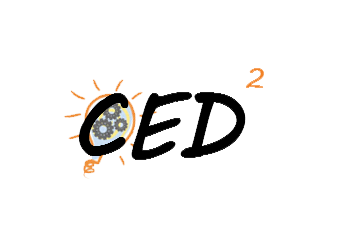








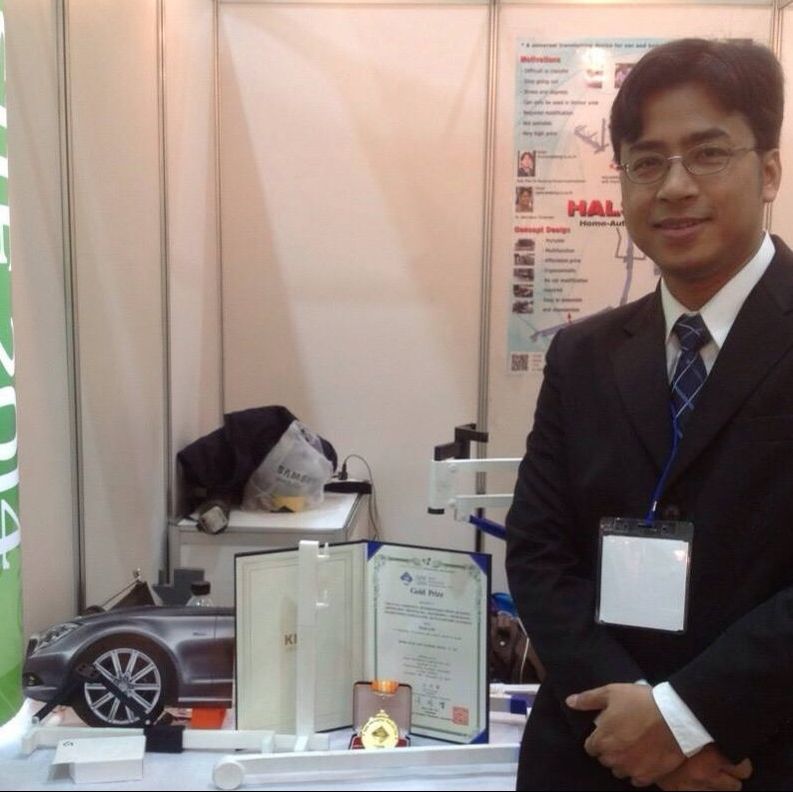
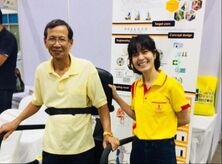
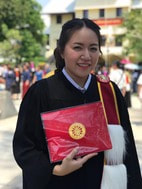


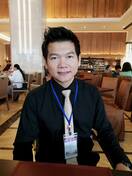
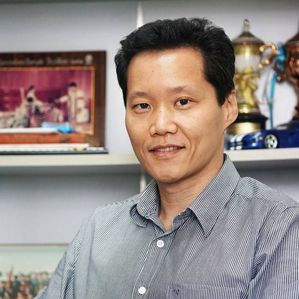
 RSS Feed
RSS Feed